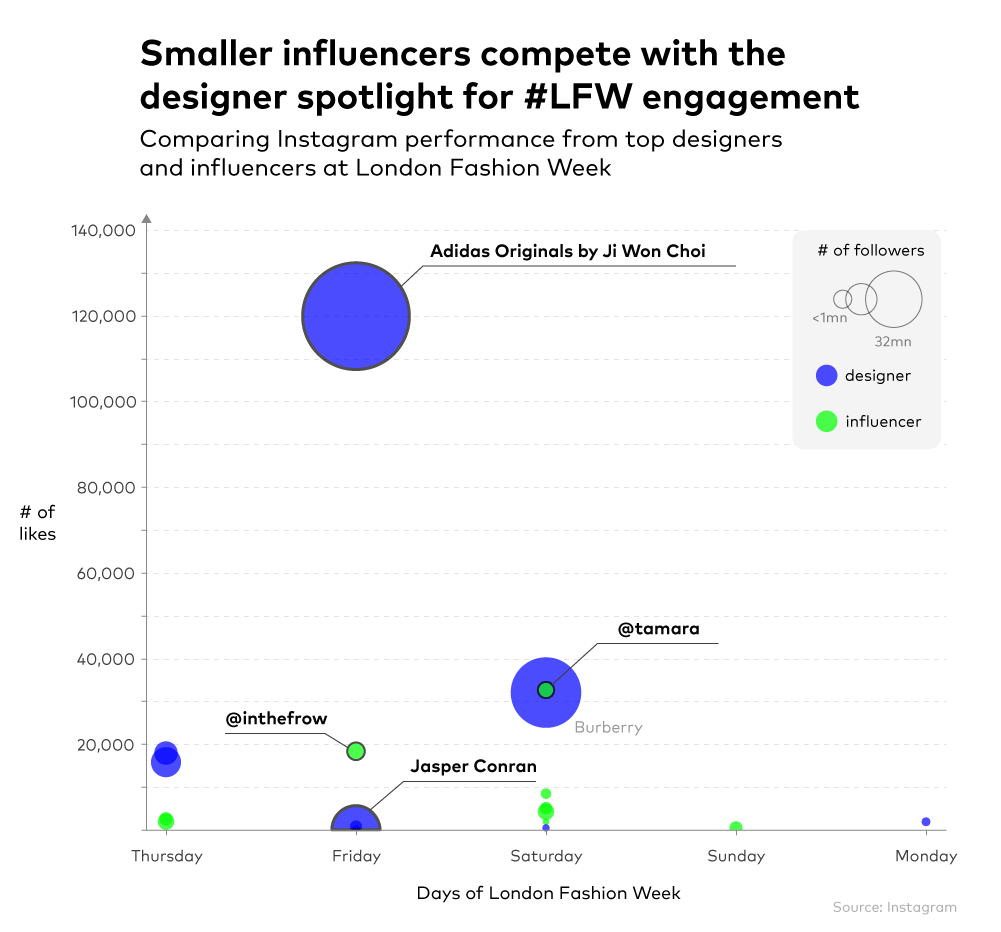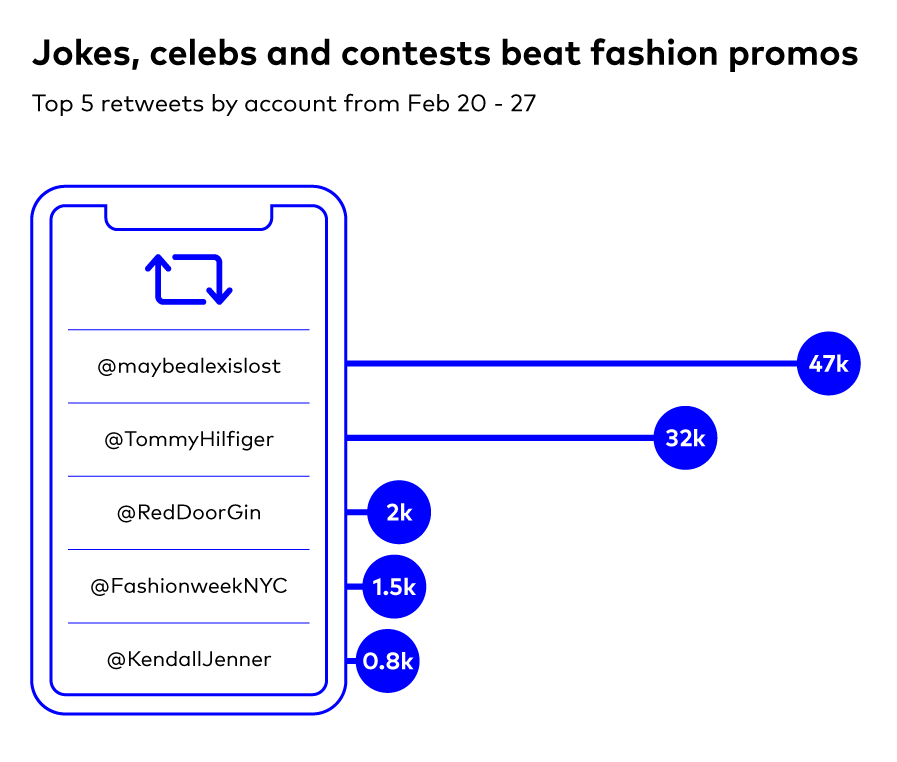 Insight Influencers vs Designers: Data Insights From London Fashion Week
Insight Influencers vs Designers: Data Insights From London Fashion Week
Influencer marketing has risen to prominence in many industries, particularly in lifestyle, fashion and beauty. Historically however, luxury fashion brands have been reluctant in adopting social media more generally. We are beginning to see this change as the ‘Big Four’ fashion weeks utilise digital media to share behind-the-scenes content, live streams and influencer takeovers, dropping the veil of secrecy and attracting newer, younger fans.
eConsultancy conducted a study of luxury brands and their use of influencer marketing. Their findings show that 28% of luxury brands believe that influencers are now ‘critical’ for their product launches and 24% stated that they are ‘critical’ for content promotion and distribution. To get a significant reach, the right influencers are imperative.
Despite this, there has been a lot of controversy over influencer fraud, fake followers and falling engagement with the top influencers. There are questions around how influencer content stands up against brands posting content on their own channels. Are they worth the investment or are brands better off keeping things ‘in-house’?
We looked at the data to get some answers. During London Fashion Week we selected a group of designers who were showcasing and compared their Instagram pages to a group of prominent Instagram fashion influencers.
We also explored Twitter the following week to see what #LFW content was being shared the most.
The results
The designers we studied had followings either as large as or far larger than the influencers. We would assume that the fashion week content they posted would gain traction but overall this was not the case. The multi-award winning and notable designer Jasper Conran earned 115 likes and 4 comments on the post we studied. The celebrity designer Alexa Chung, earned a shocking 7 likes on her post.
This wasn’t the case for all designers. Vivienne Westwood, earned approximately 17k likes and the Adidas Originals collection by Ji Won Choi exceeded the 100k mark in just a few days.
When we look at the data for influencers, it gets interesting. ‘@inthefrow’ run by the influencer Victoria earned over 18k likes on a single post. The influencer @Tamara is nearly at the same level of engagement as Burberry, despite a significantly smaller following. In terms of engagement rates, almost every influencer outpaced the designers.
All the influencer posts we looked at were ads for fashion brands. They achieved an impressive level of organic reach and engagement, during a highly competitive season for fashion content.

Twitter is a different beast to Instagram, with a very different influencer culture. Looking at the London Fashion Week content here was also telling. Only one fashion brand- Tommy Hilfiger- made it to the top five most retweeted. On Twitter, different types of content gain traction. The top post was from a writer who tweeted a witty comment after spotting Louis Tomlinson in the front row of the Top Shop show.

What does this mean?
When it comes to the fashion industry, luxury brands are failing to make the most of the power of social media. Influencers have an impressive level of impact and engagement and, despite their challenges, it’s still worth considering including them in your digital strategies. Gaining visibility for your brand is important. But for the best results, think about how you can leverage an influencer’s reach to create conversions such as retargeting ads and using Instagram’s e-commerce features.
Things to Consider
- Diversify Though controversial, influencer marketing is a great way to amplify brands in many B2C industries and reach audiences in new ways. Ideally, every brand could maintain a strong social media presence organically and using paid search. But in some industries, such as luxury goods, employing ambassadors to share your message can help diversify your marketing mix alongside reach new audiences. Consider dedicating some budget to test influencer campaigns instead of just boosting branded posts through paid media.
- Channels Influencer marketing varies widely from channel to channel, each with their own set of key influencers and customer behaviours. To set yourself up for success, craft a strategy for each channel that plays to their strengths.
- Metrics Luxury brands are less concerned with vanity metrics. They want to make sure that their influencer campaigns bring very tangible results. eConsultancy states that 79% consider web traffic generated a marker of success and 61% hope for press coverage from a campaign. Top tip: make the most of the the ‘Swipe Up for Link’ feature in Instagram Stories, it’s proving the most efficient way to acquire traffic from the platform.
- Content Competitors. Large cultural events are used as an anchor for brands sharing content. For LFW A/W19, the Justice for Grenfell campaign, Dyson and designers who weren’t showcasing were trying to capture attention. When planning your branded content campaigns, you need to think beyond just direct competitors and consider anyone who may want to start a conversation with the same audience group.
